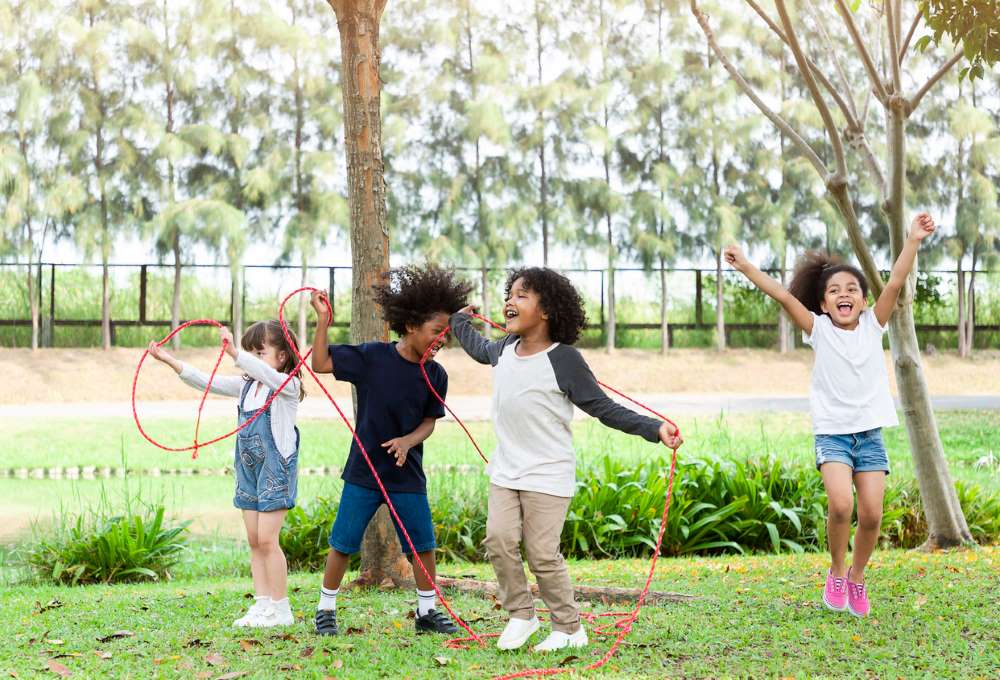
What is play-based learning? If you’ve been reading about learning through playing everywhere, or heard about this technique used by a maths tutor in Brisbane, that’s because this method is now used and admired more and more by schools and parents. Now you might wonder- how do actually kids learn if they’re only playing? You can find out all about the theory and how it works if you keep on reading this article.
Play-based learning in primary schools is used as a teaching technique and brings a range of benefits for children that practice it. However, if you’re still not convinced that it’s a good idea, you have to read more about its elements and how it can positively affect your kids.
Elements of Play-Based Learning
Learning through play is a great teaching technique in the 21st century. This method is not welcomed by everyone, but it’s more commonly used as time goes by. Today we’ll talk about the basics so that you get more familiar. Let’s see what it’s made of and how it works.
What are the elements of play-based learning, and how do children learn through play? Play-based education uses various techniques and features to promote playful learning:
-
Initiates joy: it’s a fact that kids love playing. Therefore, encouraging children to learn while they play is highly beneficial because it makes them happy. Yes, there can be a few fights with other kids along the way, but that’s just a part of the process. Overall, this context for learning is very enjoyable for the child.
-
The child makes a decision: although teachers or parents can stimulate the children to play, it’s mostly up to them whether they’ll want to do it. There is no pressure; instead, the kid decides whether it wants to play, how much time they’ll spend playing, and what they’ll play.
-
It’s a process that lasts: this learning program doesn’t have a strict final goal. You should only encourage children to play and learn, not expect them to achieve a specific goal. Since there is no finish line, this process lasts for as long as the child wants to play.
-
It’s creative: in play-based classrooms, students get more creative. This method of learning will stimulate their imagination. It uses the early years learning framework to stimulate kids to think of creative ways to play, find solutions, and communicate with other kids. Also, the method can be used both indoor and outdoor, meaning that it has the perfect balance between indoor and outdoor activities.
-
No structure: another essential element is that there is no particular type of play to follow or any rules to know. Children who learn through play will have a lot of time to make their own rules, face challenges, learn problem-solving while having fun, and much more. There is no strict plan to follow and no structure of the game. Since time is unlimited and determined by the child, they’ll learn a lot without being interrupted.
7 Major Benefits of Play-Based Learning
What kind of benefits does the play-based learning theory offer? What can you expect your children to gain from this method? Here are the significant seven benefits you have to know about:
-
Improved Communication Skills
Children learn a lot while playing. One of the things that they’ll do is talk to their friends, teachers, or even adults if you practice this method at home. This will improve their communication skills and help them expand their vocabulary. Playing isn’t all about having toys and practising motor skills. It’s also about talking, sharing ideas, listening, and communicating with others. Unfortunately, many parents are under the impression that play-based methods can only help with motor skills. In fact, these games are perfect for kids to practice their communication.
Even when kids play alone, that can be a learning environment for them. Many children talk to themselves, and there is nothing wrong with that. They are actually practising their communication skills although there isn’t anyone else to talk to.
-
Better Motor Skills
Now, let’s talk more about motor skills. Quality play-based learning includes a variety of activities that promote children’s physical abilities. Teachers and parents should introduce various activities, including running, swimming, skipping, colouring, playing sports, climbing, playing games with a ball, and much more.
It’s essential that young children participate in group sports as well, to stimulate both communication and motor skills. Even the simplest physical activities will make kids use their muscles and bodies.
-
Emotional Development
Kids aren’t always happy while they play and learn. Thanks to this method they will learn how to cope with their emotions. When children develop a sense of their own emotions during play, it’s much easier for them to know how to control them and recognize them in real life. Since there are various games to play, they will learn about happy, sad emotions and responsibility.
Another reason why so many parents love this method is that it is a successful way for children to deal with stress. They get familiar with the emotion and while socializing they learn how to control it and find relief.
-
Social Skills Development
Social and emotional development is so important. There is no doubt that play-based learning is great for the social life of a child. When playing group games, kids interact with each other and form friendships. This helps them learn the basics of socializing and meeting new people.
-
Improved Cognitive Skills
Did you know that this play-based approach to learning can boost the cognitive functions of your kids? It stimulates a variety of cognitive functions including the ability to deal with problems, language skills, learning abilities, brain development, visual recognition, and much more.
The cognitive skills that kids have learned and developed while they were playing, they’ll later use in real life. It will be significantly easier for them to be good students in various school subjects such as languages, mathematics, science, natural sciences and more. These children will recognize letters, easily learn how to read and write because they worked on their motor and mental skills. All these improvements build productive learners that are more prepared to face the world and different challenges.
-
Better Imagination and Creativity
Although most kids are quite innovative, all of them need a push to develop their imagination and creativity. When kids play, they imagine many scenarios and often pretend to be someone else. When they discover games with doctors, bakers, cooks, and other professions they will get an idea of what these people do, and how responsibilities work. The more curious a child is, the better. You should be there to answer all their questions and support your children’s interests.
-
Solving Problems and Critical Thinking
While children play and interact with other kids, they will very likely face problems. However, because of the innovative games included in the program, the little ones will turn into kids that know how to solve their own problems. If they ever fail, let them try again, and they’ll be more confident than ever. It’s also a great way for a child to learn that every action causes a reaction and that their choices can lead to consequences.
Conclusion
Play-based learning is a program that is popular in the early years of primary school. It teaches kids skills and prepares them for what’s to come through play. This kind of learning is not a new concept, but it’s becoming more and more popular because of the proven benefits.
Children that learn through play practice their communication, motor skills, show signs of improved emotional, social, cognitive development, nurture their imagination, creativity, and learn about critical thinking and solving problems. Playing doesn’t mean just having loads of toys around. It can be done with interactive and stimulating games that achieve all the benefits we listed above.



























